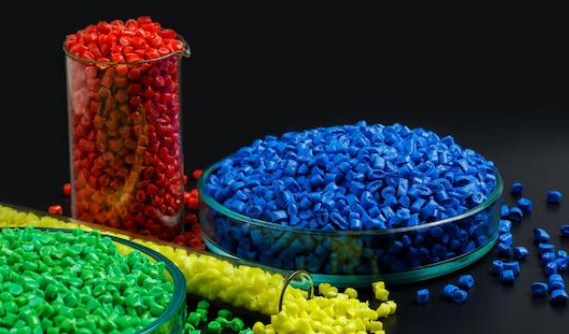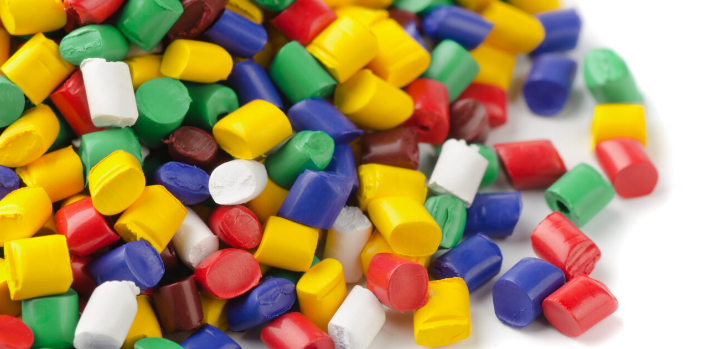The best plastic for extrusion depends on application needs, balancing cost, durability, and environmental factors.

Properties of Plastics for Extrusion
In the field of plastic extrusion, the properties of the materials used are crucial for determining their suitability for various applications. Selecting the right plastic depends on understanding its inherent qualities, including how it responds to heat and mechanical stress.
Thermal Properties
Thermal properties are key in determining how a plastic behaves under the heat used in the extrusion process. These include:
- Melting Point: The temperature at which a plastic transitions from a solid to a liquid. For example, Polyethylene (PE) typically has a melting point range of 120-180°C.
- Thermal Conductivity: This measures how well a plastic conducts heat. Plastics with low thermal conductivity are better insulators.
- Thermal Expansion: The rate at which a plastic expands when heated. A lower coefficient of thermal expansion is desirable for maintaining dimensional stability.
Mechanical Properties
The mechanical properties of plastics determine their strength, flexibility, and durability during and after the extrusion process.
- Tensile Strength: The maximum stress a material can withstand while being stretched or pulled. High tensile strength is important for products requiring resistance to stretching or pulling forces.
- Flexural Strength: This refers to the ability of a plastic to resist deformation under load. It is vital for products that will bear weight or endure bending forces.
- Impact Resistance: The ability of the plastic to absorb energy and plastically deform without fracturing. Materials with high impact resistance are preferred for products subjected to sudden forces or shocks.
Common Plastics Used in Extrusion
Extrusion processes widely use certain types of plastics due to their favorable properties and cost-effectiveness.
Polyethylene (PE)
Polyethylene, known for its versatility and low cost, dominates various extrusion applications. Its key attributes include:
- Varieties: Exists in several forms such as Low-Density PE (LDPE) and High-Density PE (HDPE), each with distinct properties.
- Durability: Offers excellent resistance to moisture and chemicals. HDPE, for instance, has a high strength-to-density ratio.
- Applications: Widely used in packaging, including plastic bags, bottles, and geomembranes.
- Cost-Effectiveness: PE is generally affordable, making it an economical choice for a wide range of products.
- Recyclability: PE is recyclable, which adds to its environmental appeal.
Polypropylene (PP)
Polypropylene is favored for its strength and thermal resistance, making it ideal for hot-fill applications.
- Thermal Properties: PP can withstand higher temperatures, up to 160°C, making it suitable for applications involving heat.
- Mechanical Strength: Offers resistance to fatigue, essential for creating living hinges in containers and bottles.
- Lightweight: PP is lighter than PE, which contributes to lower transportation costs.
- Uses: Common in automotive parts, consumer goods, and food containers.
- Cost: While slightly more expensive than PE, PP offers added benefits that justify the extra expense in many applications.
Polyvinyl Chloride (PVC)
PVC’s versatility and flame retardance make it a popular choice in construction and electrical applications.
- Flexibility: Ranges from rigid to flexible, altered through plasticizers.
- Chemical Resistance: Resistant to oils and chemicals, PVC is ideal for long-term applications.
- Fire Resistance: Inherently flame retardant, making it safe for use in electrical cable insulation.
- Applications: Widely used in pipes, window frames, and medical devices.
- Cost Concerns: PVC is generally cost-effective, though its additives for flexibility or flame retardance can increase its price.

Evaluating the Best Plastic for Specific Applications
Choosing the right plastic for a specific application in extrusion requires a careful assessment of various factors. Each plastic type offers unique properties that make it suitable for different uses.
Criteria for Selection
The selection of the most appropriate plastic is based on several critical criteria:
- Temperature Resistance: Consider the operating temperature range. For example, PP withstands higher temperatures compared to PE.
- Chemical Resistance: Evaluate the material’s resistance to chemicals, especially if the product will be exposed to harsh environments.
- Strength and Durability: Assess the required strength and durability. HDPE, known for its high strength-to-density ratio, is ideal for heavy-duty applications.
- Cost: Factor in the material cost. PE is generally more budget-friendly than PP or PVC.
- Environmental Factors: Consider environmental impact and recyclability. PE and PP are recyclable, which can be a deciding factor for eco-friendly products.
- Regulatory Compliance: Ensure the material complies with relevant industry standards and regulations, especially in food contact and medical applications.
Application Examples
Different plastics excel in various applications, demonstrating their unique properties:
- Packaging Industry: PE, especially LDPE, is widely used in packaging due to its flexibility and moisture resistance. It’s ideal for plastic bags and wrapping films.
- Automotive Parts: PP is preferred for automotive components because of its low weight, which contributes to fuel efficiency, and its resistance to chemicals and heat.
- Plumbing and Construction: PVC, known for its rigidity and durability, is commonly used for pipes and window frames. Its flame retardant properties make it safe for building materials.
- Medical Devices: Certain grades of PP, known for their purity and chemical resistance, are suitable for medical devices and containers.
Advancements in Plastic Extrusion Materials
The field of plastic extrusion is continuously evolving, with advancements in materials enhancing performance, sustainability, and efficiency. These innovations cater to the growing demand for high-quality, environmentally friendly, and cost-effective products.
Innovations in Plastic Formulations
Recent developments in plastic formulations have led to significant improvements in the properties and capabilities of extrusion materials:
- High-Performance Polymers: Introduction of polymers with enhanced properties such as higher heat resistance, greater strength, and improved chemical resistance.
- Biodegradable Plastics: Development of biodegradable materials, like PLA (Polylactic Acid), which offer an environmentally friendly alternative to traditional plastics.
- Nanocomposites: Integration of nanomaterials into plastics, resulting in improved mechanical properties, thermal stability, and even electrical conductivity.
- Custom Compounds: Customized plastic blends are being developed to meet specific requirements of unique applications, offering tailored solutions for complex challenges.
- Additive Manufacturing-Grade Plastics: With the rise of 3D printing, there’s a growing need for plastics that are optimized for additive manufacturing processes.
Environmental Considerations
Environmental sustainability is a crucial aspect driving innovations in plastic extrusion materials:
- Recycling-Friendly Materials: Efforts to create plastics that are easier to recycle, aiming to reduce waste and encourage circular economy practices.
- Reduction of Harmful Additives: Shift towards using safer, non-toxic additives in plastic formulations to minimize environmental impact and health risks.
- Life Cycle Assessments (LCAs): Increasing use of LCAs to evaluate the environmental impact of plastics throughout their lifespan, from production to disposal.
- Energy-Efficient Production: Focus on developing materials that require less energy for processing and extrusion, thereby reducing the carbon footprint associated with plastic production.
- Green Sourcing: Emphasis on sourcing raw materials from renewable resources, further reducing the environmental impact of plastic products.

Challenges and Solutions in Plastic Extrusion
The plastic extrusion industry faces various challenges, ranging from technical issues to environmental concerns. Addressing these challenges involves innovative solutions and continuous improvements in technology and practices.
Common Issues Faced
Plastic extrusion processes encounter several common issues that can affect product quality and production efficiency:
- Material Degradation: Exposure to high temperatures during extrusion can degrade certain plastics, leading to poor product quality.
- Dimensional Inconsistencies: Achieving consistent dimensions can be challenging due to variations in material flow and cooling rates.
- Tool Wear: The continuous operation of extrusion tools can lead to wear and tear, affecting the precision and quality of the final product.
- Environmental Impact: Traditional plastics contribute to environmental pollution and are challenging to recycle effectively.
Overcoming Material Limitations
Innovative solutions and technological advancements help overcome these limitations:
- High-Performance Materials: Using advanced polymers that resist high-temperature degradation and maintain integrity during extrusion.
- Precision Engineering: Implementing better control systems and precision engineering to maintain consistent dimensions and reduce material wastage.
- Regular Maintenance and Upgrades: Regular maintenance of equipment and adoption of wear-resistant tooling materials to extend the life of extrusion tools.
- Sustainable Practices: Embracing recycling and the use of biodegradable or recyclable plastics to mitigate environmental impacts.
Case Studies: Successful Plastic Extrusion Projects
Industrial Applications
Plastic extrusion has found successful applications in various industrial sectors:
- Automotive Industry: Manufacturing of lightweight, high-strength components like bumper covers and fuel tanks, significantly improving vehicle efficiency.
- Construction Industry: Production of PVC pipes, which are durable, cost-effective, and easy to install, revolutionizing plumbing and construction practices.
Consumer Products
The versatility of plastic extrusion is evident in numerous consumer products:
- Packaging Materials: Creation of flexible packaging solutions like shrink wraps and protective films, offering both durability and cost-effectiveness.
- Household Items: Production of a wide range of household items such as garden hoses, window frames, and toys, showcasing the adaptability of extrusion processes to different product requirements.




